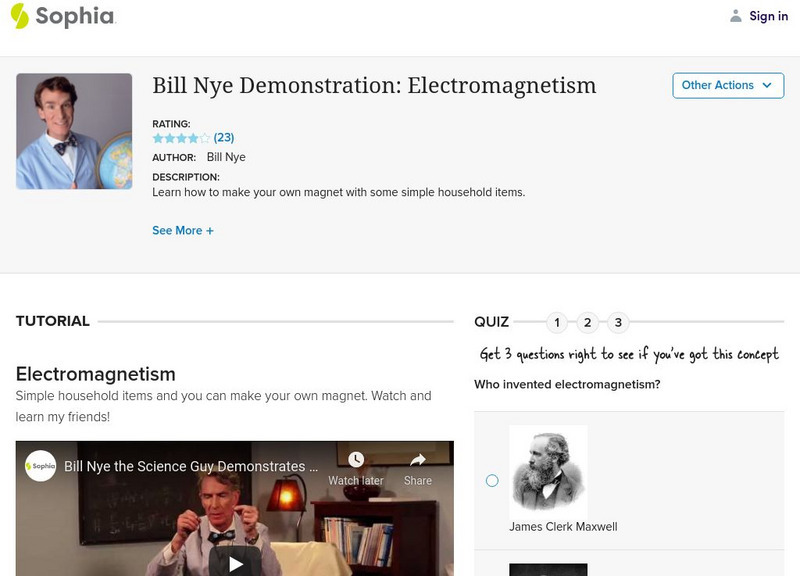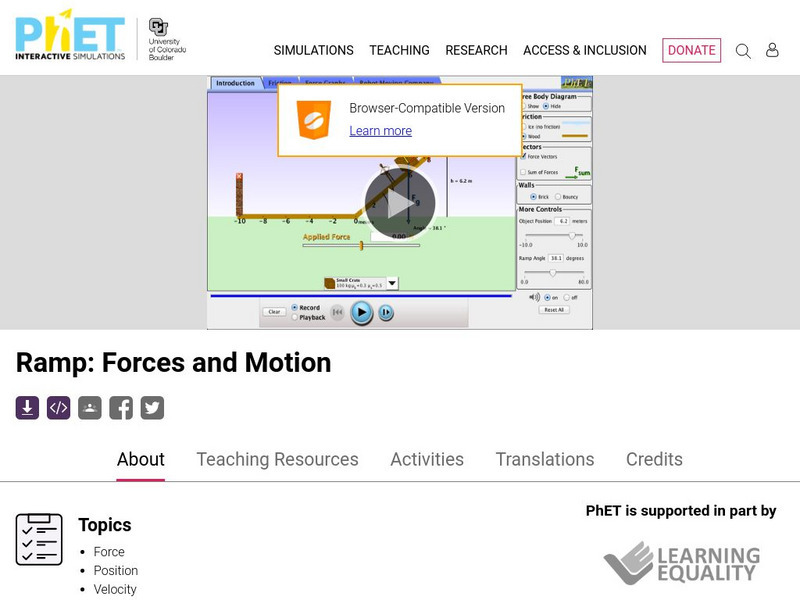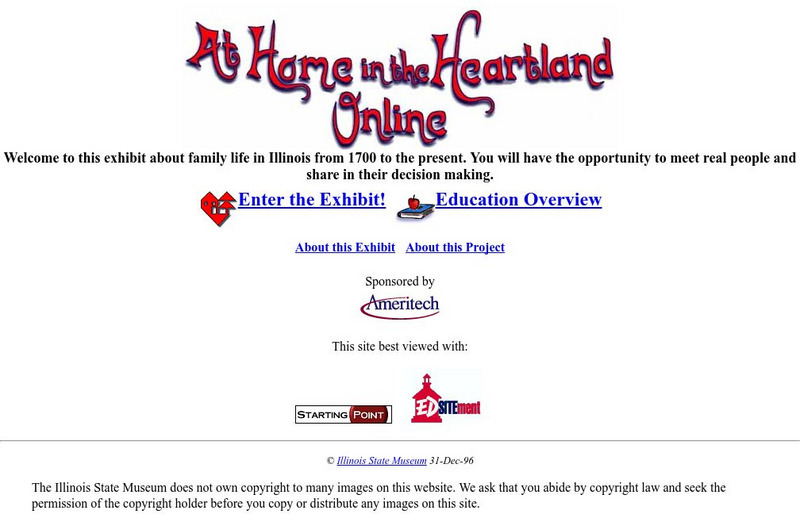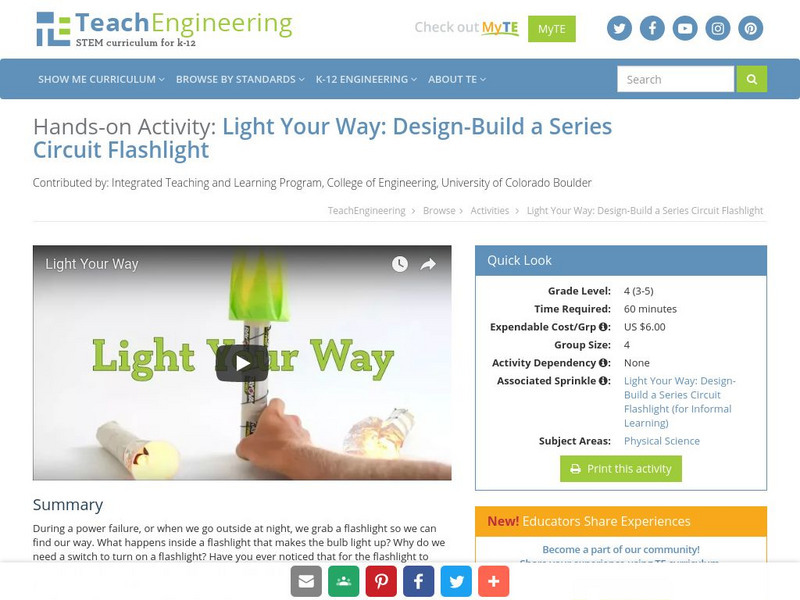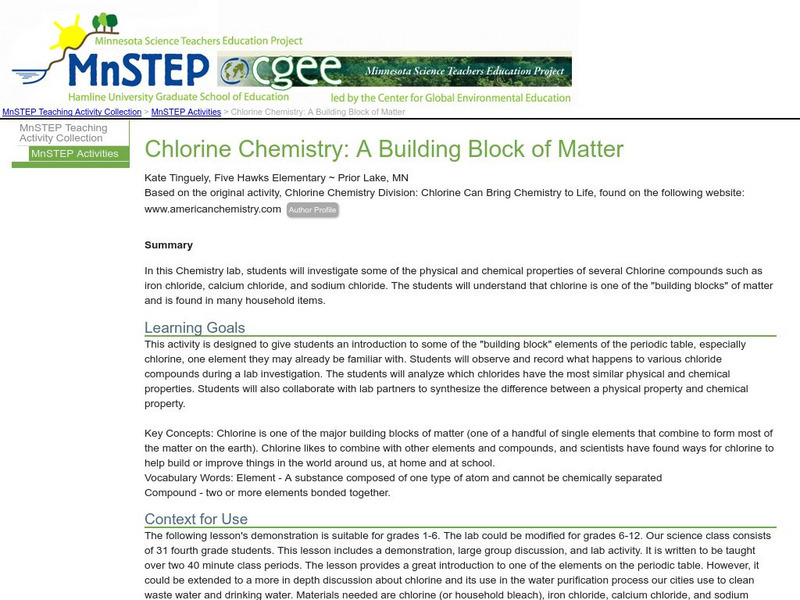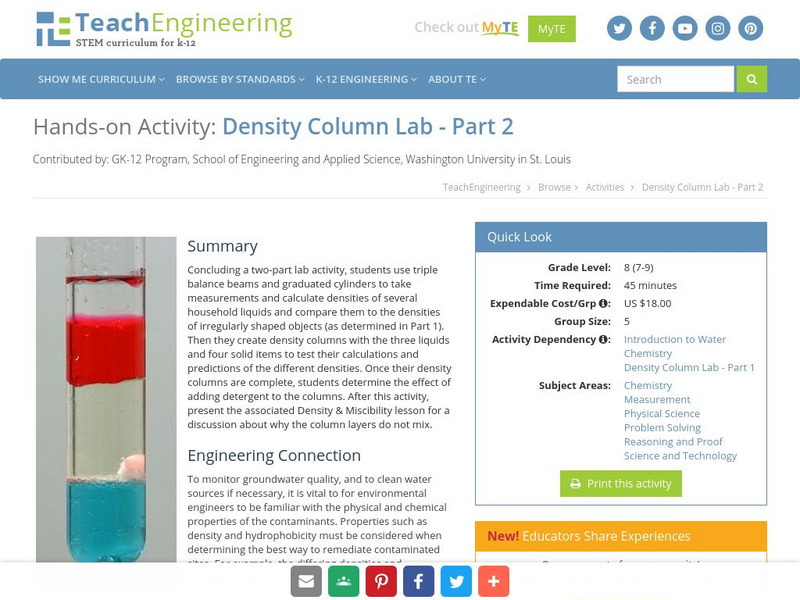Hi, what do you want to do?
Curated OER
Materials Engineering: Designing Walls
Young scholars discover how the matierals in the earth can be used to make walls and buildings. They examine the Great Wall of China and its engineering. They complete the unit by creating their own wall from a design they drew.
Curated OER
Basic Electric Circuits
Students calculate the resistance across a bank of resistors in a series, parallel and combined circuit. Using new vocabulary words, they define and describe them in a scientific manner. After stating Ohm's Law, they solve electrical...
Curated OER
Breaking News English: Dog-Washer Cleans Pets and Saves Cash
In this ESL reading comprehension worksheet, students read or listen to the passage, then complete a wide variety of warm-up, before listening/reading, while listening/reading, after listening/reading, discussion, writing and homework...
Sophia Learning
Sophia: Bill Nye Demonstration: Electromagnetism
Learn how to make your own magnet with some simple household items as Bill Nye the Science Guy demonstrates how an electromagnet works. [1:03]
Technovation
Curiosity Machine: Challenge: Build a Blooming Flower
Can you create a blooming flower that would attract pollinators? This Curiosity Machine project challenges students to make this flower using common household items. Site includes a place for students to document their process as well as...
Technovation
Curiosity Machine: Challenges: Build a 3 D Object Out of Tetrahedra
Can you build a 3-D object out of tetrahedra that is as big as you are? With this challenge, students will be using common household items to build their tetrahedra structure. Site contains the challenge, tips, a lesson plan, and a place...
University of Colorado
University of Colorado: Ph Et Interactive Simulations: Ramp: Forces and Motion
Explore forces and motion as you push household objects up and down a ramp. Lower and raise the ramp to see how the angle of inclination affects the parallel forces.
University of Colorado
University of Colorado: Ph Et Interactive Simulations: The Ramp
Explore forces, energy, and work as you push household objects up and down a ramp. Lower and raise the ramp to see how the angle of inclination affects the parallel forces acting on the file cabinet. Graphs show forces, energy and work.
Other
Illinois State Museum: At Home in the Heartland
Wonderful site that takes you on a tour of the history of Illinois! You are treated to pictures of such things as early prairie household objects and stories of early settlers - and much, much, more!
Other
Illinois State Museum: At Home in the Heartland
Wonderful site that takes you on a tour of the history of Illinois! You are treated to pictures of such things as early prairie household objects and stories of early settlers - and much, much, more!
TeachEngineering
Teach Engineering: Light Your Way
When there is a power failure, or when we go outside at night, we grab a flashlight so we can find our way. What happens inside a flashlight that makes the bulb light up? Why do we need a switch to turn on a flashlight? Have you ever...
Science Education Resource Center at Carleton College
Serc: Chlorine Chemistry: A Building Block of Matter
Students investigate physical and chemical properties of several chlorine compounds such as iron chloride, calcium chloride, and sodium chloride. The students will then discover that chlorine is one of the building blocks of matter and...
TeachEngineering
Teach Engineering: Density Column Lab Part 2
Concluding a two-part lab activity, students use triple balance beams and graduated cylinders to take measurements and calculate densities of several household liquids and compare them to the densities of irregularly shaped objects (as...
Countries and Their Cultures
Countries and Their Cultures: Dyula
"Dyula" is a Manding word typically referring to "traders" as a socio-professional category, particularly to Muslim long-distance traders who speak one or another dialect of Manding. The name is used as an ethnic label by...








